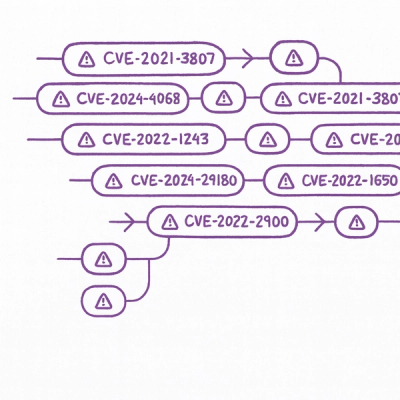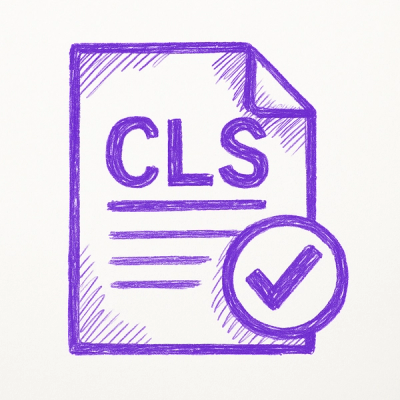
Security News
Astral Launches pyx: A Python-Native Package Registry
Astral unveils pyx, a Python-native package registry in beta, designed to speed installs, enhance security, and integrate deeply with uv.
Add belongs_to custom model (add this in initializer and load it like this belongs_to UserNotif.model_name... in notif.rb)
Add this line to your application's Gemfile:
gem 'user_notif'
And then execute:
$ bundle
After you install UserNotif and add it to your Gemfile, you need to run the generator:
rails generate user_notif:install
The UserNotifs belong to a user. To ensure it works, make sure you have a User model
If you want to use it out of the box, require JS and SCSS files
In your app/assets/stylesheets/application.css
/*
*= require user_notif
*/
In your app/assets/javascripts/application.js
//
//= require user_notif
//
Do not forget to restart your server to load the new assets.
Now you can create your first notification !
Run this generator:
rails generate user_notif name target_model
It will create a NameNotif model and his associated views. You should customize the generated views.
A notification has a user and a target. The target can be any model, like a User or something else.
You can then override the views to display informations about the target.
Example:
rails generate user_notif new_follower user
It creates a NewFollowerNotif
Now you can add the logic to create notifications when a user is followed by another one (the target).
Example:
NewProjectNotif.create(target: self, user: self.user)
To create sticky notifs (notification staying on top of the list), you can add sticky: true when you create it. Like this:
NewProjectNotif.create(target: self, user: self.user, sticky: true)
Then, you can display it in your view like this: <%= list_user_notifs(UserNotif::Notif.all.order(sticky: :desc, unread: desc, id: :desc)) %>
This line of code will display notifications by sticky first, then unread, then by id.
To display your notifications, you can use some helpers:
list_user_notifs(notifs, small = true)
user_notif(notif, small = true)
<%= list_user_notifs(UserNotif.all) %>
<%= user_notif(UserNotif.last, false) %>
The small parameter will take care of rendering the partial located in app/views/notifs/[small,full]
You can also use the notif_badge helper to display a badge with the number of unread notifications.
<%= notif_badge(UserNotif.unread) %>
You can customize your views by modifying app/views/notifs/[small,full]/* files.
Implement your own element to mark notifications as read with mark-as-read class.
An ajax call to the data-url is triggered when you click on this element. This makes the notification read !
Example:
<div class=user-notif">
...
<div class="mark-as-read" data-url="<%= read_user_notif_path(id: @notif.id) %>">X</div>
</div>
The default behavior remove the unread class on the element itself but you can override it or add your own behavior.
Every notification sends a mail by default.
You can override this in your generated model: app/models/notifs/your_notif.rb
The mailer views are located at app/views/notifs/mailer/your_notif.[html,text].erb
You can customize the mailer by providing options in your generated initializer (install step):
# config/initializers/user_notif.rb
UserNotif.setup do |config|
config.app_name = 'My App'
config.mailer_sender = 'no-reply@myapp.com'
config.mailer_bcc = 'admin@myapp.com'
config.mailer_cc = 'admin@myapp.com'
config.mailer_reply_to = 'admin@myapp.com'
config.mailer_date = Date.current
config.return_path = 'contact@myapp.com'
end
By modifying the initializer, all your notification mailers will default to this.
You can still provide custom values per notification by overriding the method email_options in your generated model.
This method should look like this:
# app/models/notifs/your_notif.rb
...
def email_options
super({
subject: I18n.t('awesome.18n.key'),
cc: @coworker.email,
bcc: @president.email
})
end
The super ensures default values are loaded.
If you want to customize the mailer behaviour, you can re-open the class at app/mailers/user_notif/notif_mailer.rb. For example, If you want to use another mail generator (such as Roadie) alongs with i18n and the Rails URL helpers or even add a layout to your emails, it would give something like this :
# app/mailers/user_notif/notif_mailer.rb
class UserNotif::NotifMailer
include Roadie::Rails::Automatic
include DefaultUrlOptions
include Rails.application.routes.url_helpers
layout 'mailer'
end
After checking out the repo, run bin/setup to install dependencies. Then, run rake spec to run the tests. You can also run bin/console for an interactive prompt that will allow you to experiment.
To install this gem onto your local machine, run bundle exec rake install. To release a new version, update the version number in version.rb, and then run bundle exec rake release, which will create a git tag for the version, push git commits and tags, and push the .gem file to rubygems.org.
Bug reports and pull requests are welcome on GitHub at https://github.com/terry90/user_notif. This project is intended to be a safe, welcoming space for collaboration, and contributors are expected to adhere to the Contributor Covenant code of conduct.
The gem is available as open source under the terms of the MIT License.
FAQs
Unknown package
We found that user_notif demonstrated a not healthy version release cadence and project activity because the last version was released a year ago. It has 1 open source maintainer collaborating on the project.
Did you know?

Socket for GitHub automatically highlights issues in each pull request and monitors the health of all your open source dependencies. Discover the contents of your packages and block harmful activity before you install or update your dependencies.

Security News
Astral unveils pyx, a Python-native package registry in beta, designed to speed installs, enhance security, and integrate deeply with uv.

Security News
The Latio podcast explores how static and runtime reachability help teams prioritize exploitable vulnerabilities and streamline AppSec workflows.

Security News
The latest Opengrep releases add Apex scanning, precision rule tuning, and performance gains for open source static code analysis.